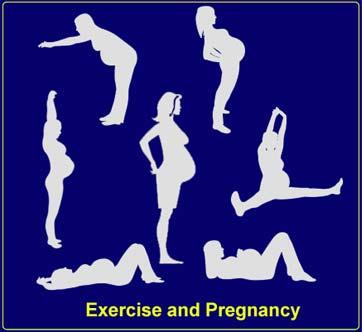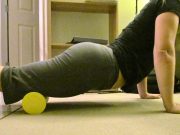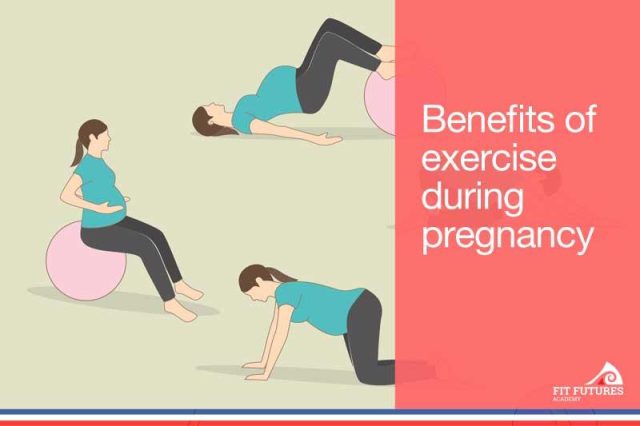Pregnancy is a unique and transformative journey that brings with it a mix of excitement, anticipation, and, understandably, a few concerns. Among these is the question of how to maintain an active lifestyle while ensuring the safety and well-being of both mother and baby. Staying active during pregnancy is not only beneficial for physical health but also for mental well-being, helping to alleviate stress and improve mood. However, it’s essential to approach this period with care and mindfulness, understanding that each pregnancy is unique and requires a personalized approach. In this article, we will explore practical tips and guidelines to help you stay active safely, empowering you to embrace this special time with confidence and joy. Whether you’re a seasoned athlete or new to exercise, these insights aim to support you in making informed decisions that prioritize your health and that of your growing baby.
Choosing the Right Exercises for Your Changing Body
As your body transforms throughout pregnancy, it’s crucial to adapt your fitness routine to ensure both your safety and that of your growing baby. Prioritizing the right exercises can help you stay active while minimizing risks. Here are some tips to consider:
- Listen to Your Body: As your pregnancy progresses, your energy levels and physical capabilities will fluctuate. Always pay attention to how you feel and adjust your workout intensity accordingly.
- Focus on Low-Impact Activities: Engaging in exercises such as walking, swimming, or prenatal yoga can maintain your fitness without putting undue stress on your joints.
- Strengthen Core and Pelvic Muscles: Gentle core exercises and pelvic floor workouts can support your changing body, aiding in labor and recovery post-birth.
It’s also helpful to know which exercises to avoid and which ones are beneficial. Here’s a simple table to guide you:
| Exercise Type | Recommended | Not Recommended |
|---|---|---|
| Cardio | Walking, Swimming | High-Impact Aerobics |
| Strength Training | Light Weights, Resistance Bands | Heavy Lifting |
| Flexibility | Prenatal Yoga, Stretching | Deep Backbends |
Always consult with your healthcare provider before starting any new exercise routine during pregnancy. They can offer personalized advice based on your specific health needs and pregnancy progression.
Listening to Your Body and Recognizing Limits
During pregnancy, your body is undergoing significant changes, and it’s crucial to listen to what it tells you. Recognizing your limits can help prevent overexertion and potential injury. Here are some signs to watch for:
- Shortness of breath
- Dizziness or faintness
- Pain in the back, pelvis, or abdomen
- Muscle weakness
- Decreased fetal movement
If you experience any of these symptoms, it’s essential to pause and rest. Remember, it’s not about pushing your boundaries but about maintaining a balance that keeps you and your baby safe.
To help you keep track of your comfort and safety, here’s a simple guideline:
| Activity Level | Recommended Action |
|---|---|
| Light | Continue with caution and monitor for any discomfort. |
| Moderate | Ensure you’re staying hydrated and take breaks as needed. |
| Intense | Consult with your healthcare provider to ensure safety. |
Maintaining an open dialogue with your healthcare provider can provide personalized insights into your unique needs. They can help tailor an exercise plan that aligns with your pregnancy journey, ensuring that you stay active and safe.

Incorporating Safety Measures into Your Routine
- Listen to Your Body: Every pregnancy is unique, and what works for one person might not work for another. Pay close attention to how you feel during physical activities. If you experience any discomfort, pain, or dizziness, it’s crucial to stop and rest. Adjust your routine based on your energy levels and be gentle with yourself.
- Stay Hydrated: Hydration is vital, especially when you’re staying active. Make it a habit to drink water before, during, and after exercise. Keeping a water bottle handy can serve as a constant reminder to sip regularly, ensuring you maintain optimal fluid levels for both you and your baby.
- Wear the Right Gear: Investing in comfortable, supportive clothing and footwear can make a significant difference in your exercise routine. Look for breathable fabrics and shoes with good arch support to minimize discomfort and reduce the risk of injury.
| Activity | Safety Tip |
|---|---|
| Walking | Use a flat, even surface to avoid tripping hazards. |
| Swimming | Opt for a gentle swim; avoid diving or jumping in. |
| Yoga | Choose prenatal classes to ensure poses are safe. |
Consult Your Healthcare Provider: Before starting or continuing any exercise routine during pregnancy, it’s wise to consult your healthcare provider. They can offer personalized advice based on your medical history and the specifics of your pregnancy. This ensures you’re making informed decisions that prioritize both your safety and that of your growing baby.

Balancing Rest and Activity for Optimal Well-being
Finding the perfect balance between rest and activity during pregnancy is crucial for both the mother’s and the baby’s health. It’s essential to recognize your body’s cues and adjust your activities accordingly. Here are some key points to consider:
- Listen to Your Body: Pregnancy is a time of profound change. Pay attention to how your body feels during and after activities. If you experience any discomfort, fatigue, or unusual symptoms, it’s important to rest and consult with your healthcare provider.
- Choose Gentle Exercises: Opt for low-impact activities such as walking, swimming, or prenatal yoga. These exercises help maintain fitness without putting undue stress on your body.
- Incorporate Rest Periods: Rest is just as important as exercise. Ensure you have regular breaks to sit or lie down, especially if you feel any strain or fatigue.
| Activity | Benefits |
|---|---|
| Walking | Improves circulation and boosts mood |
| Swimming | Relieves joint pressure and enhances flexibility |
| Prenatal Yoga | Enhances relaxation and improves posture |
Remember, the goal is to maintain a healthy routine that supports your well-being. By tuning into your body’s needs and incorporating both rest and activity, you can enjoy a more comfortable and rewarding pregnancy journey.








































